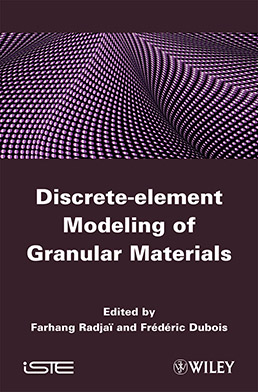
With the advent of sufficiently powerful and intensive computational resources, the Discrete Element Method (DEM) of particle simulation has become an accepted means of addressing problems in granular and discontinuous media.
This book provides a comprehensive introduction to various methods for discrete computer simulation of such granular media. Discrete-element simulations of these materials are based on four basic models (molecular dynamics, contact dynamics, quasi-static and event driven) dealing with frictional contact interactions and integration schemes for the equations of dynamics.
These models are presented in the first chapters of the book, followed by various methods for sample preparation and monitoring of boundary conditions, as well as dimensionless control parameters. Granular materials encountered in real life involve a variety of compositions (particle shapes and size distributions) and interactions (cohesive, hydrodynamic, thermal, for example) that are extensively covered. Several chapters of the book are devoted to special procedures required for high-quality simulations; and complex materials are considered with various particle shapes, size distributions, cohesive or hydro-dynamical interactions, etc., so that it can be used both for research and for the simulation of granular processes in an industrial context. The book concludes with the presentation of two applications in the field of geo-materials.
1. Molecular Dynamics Method, Sean McNamara.
2. Contact Dynamics Method, Michel Jean.
3. Quasi-Static Methods, Jean-Noël Roux and Gaël Combe.
4. Event-driven Method, Sean McNamara.
5. Particle Assembling Methods, Charles Voivret, Farhang Radjaï and Jean-Yves Delenne.
6. Construction of Granular Assemblies Under Static Loading, Gaël Combe and Jean-Noël Roux.
7. Periodic Boundary Conditions, Farhang Radjaï and Charles Voivret.
8. Dimensional Analysis and Control Parameters, Jean-Noël Roux and François Chevoir.
9. Numerical Modeling of Granular Media Composed of PolyhedralParticles, Frédéric Dubois.
10. Numerical Modeling of Cohesive Interactions, Jean-Yves Delenne, Vincent Topin, Vincent Richefeu and Farhang Radjaï.
11. Numerical Modeling of Fluid–Grain Interactions, Bertrand Maury and Aline Lefebvre-Lepot.
12. Close Interaction of Immersed Grains, Bertrand Maury and Aline Lefebvre-Lepot.
13. Numerical Modeling of Heat Production and Transmission, Mathieu Renouf and Yves Berthier.
14. Discrete Models of Wet Granular Media, Bruno Chareyre and Luc Scholtès.
15. Discrete Models of Structures in Geomaterials, Frédéric Donzé, Pascal Villard, and Dominique Daudon.
Farhang Radjaï is a CNRS Research Director at the Mechanics and Civil Engineering Laboratory (LMGC) at the University of Montpellier 2. His research focus is on granular physics to which he contributed by the numerical modeling and discovery of the bimodal structure of force chains.
Frédéric Dubois is a Research Engineer at the Mechanics and Civil Engineering Laboratory (LMGC) at the University of Montpellier 2, France. He is an expert in the field of modeling complex mechanical systems in interaction (contact, friction, adhesion, etc.).